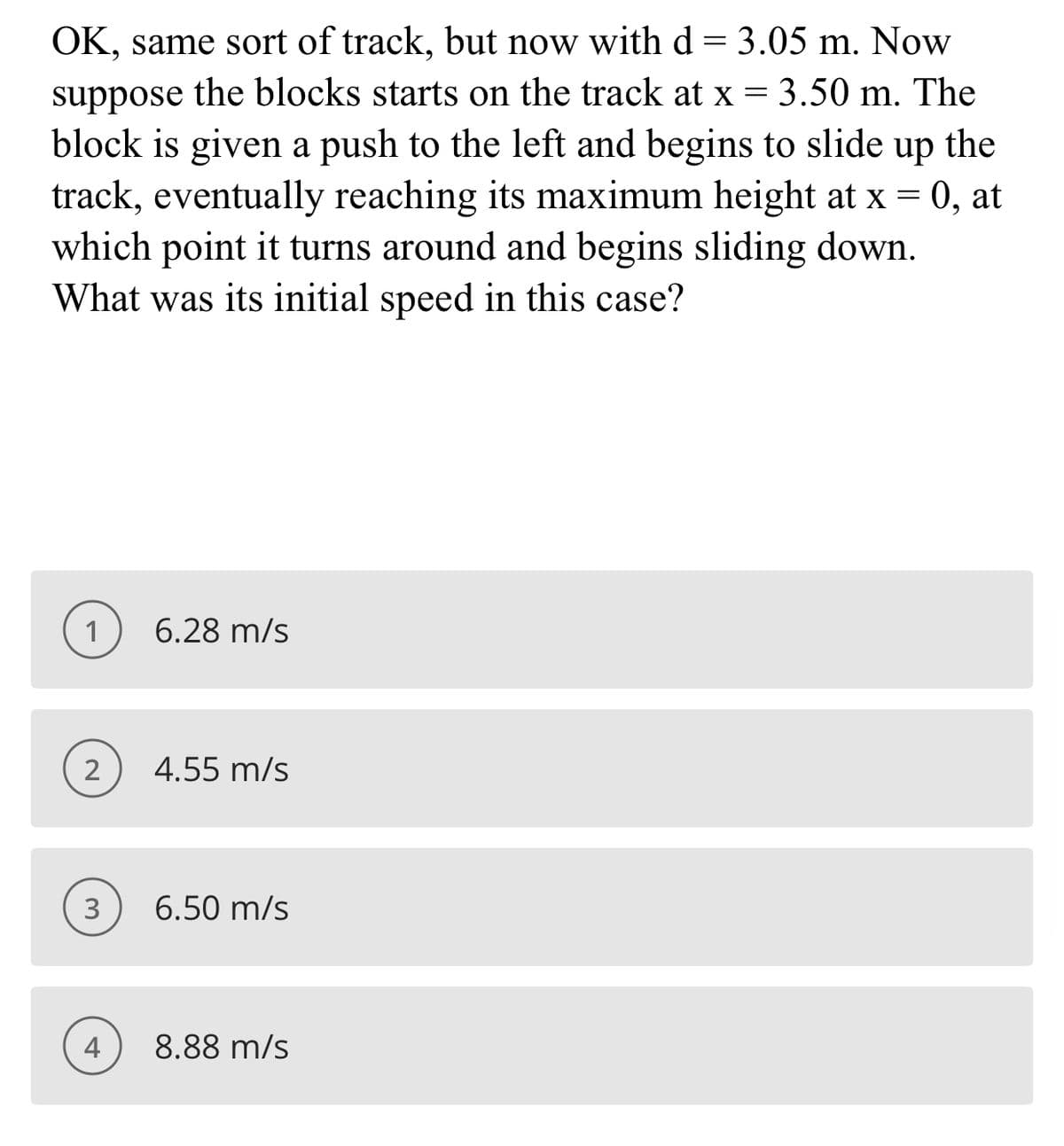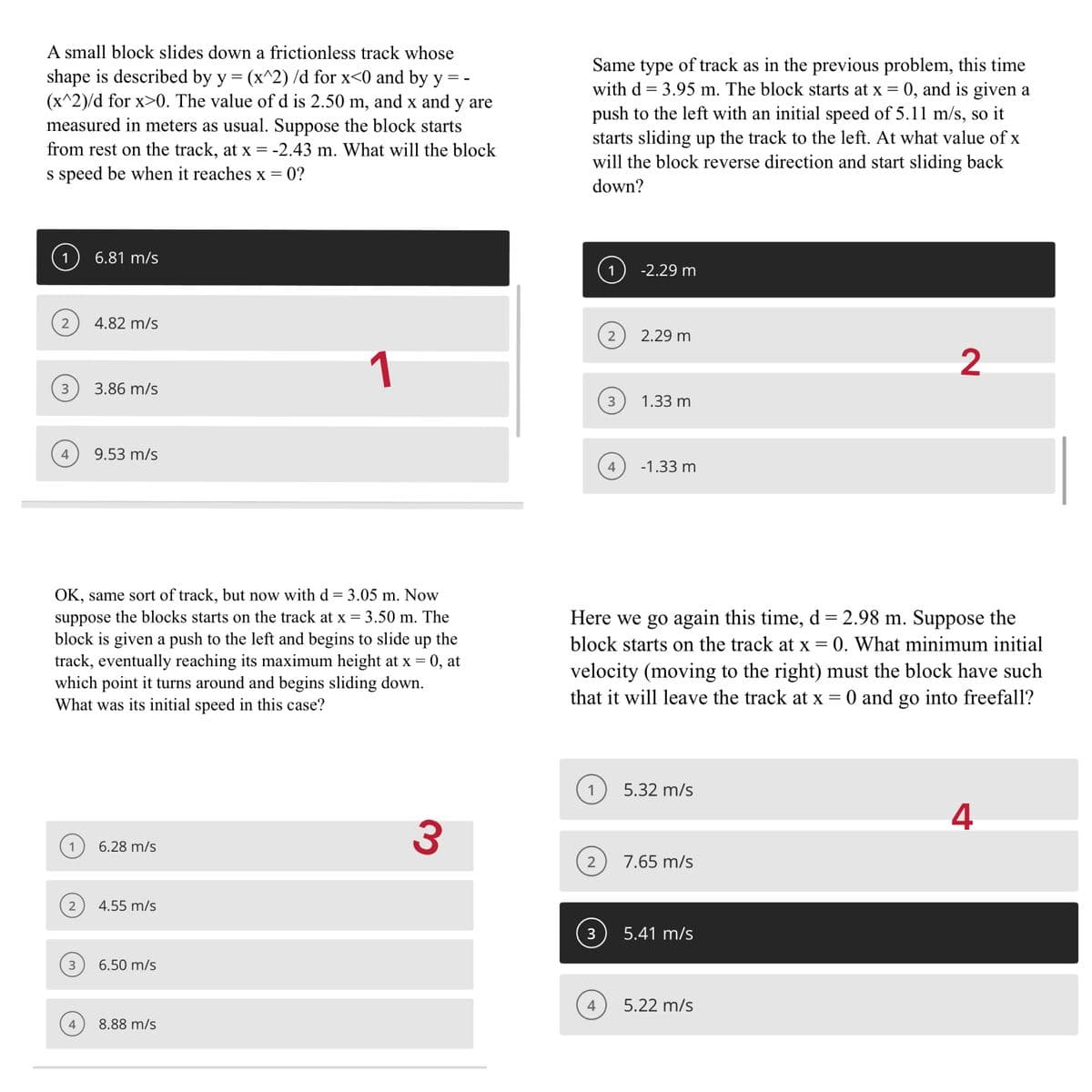OK, same sort of track, but now with d = 3.05 m. Now suppose the blocks starts on the track at x = 3.50 m. The block is given a push to the left and begins to slide up the track, eventually reaching its maximum height at x = 0, at which point it turns around and begins sliding down. What was its initial speed in this case?
Displacement, Velocity and Acceleration
In classical mechanics, kinematics deals with the motion of a particle. It deals only with the position, velocity, acceleration, and displacement of a particle. It has no concern about the source of motion.
Linear Displacement
The term "displacement" refers to when something shifts away from its original "location," and "linear" refers to a straight line. As a result, “Linear Displacement” can be described as the movement of an object in a straight line along a single axis, for example, from side to side or up and down. Non-contact sensors such as LVDTs and other linear location sensors can calculate linear displacement. Non-contact sensors such as LVDTs and other linear location sensors can calculate linear displacement. Linear displacement is usually measured in millimeters or inches and may be positive or negative.
Attached is a set of questions, I answered 3 out of 4. Please can you help with the third question as I do not understand how to go about it. Also, I would appreciate if you are able to confirm the answers to the other 3 questions.
Thank you


Trending now
This is a popular solution!
Step by step
Solved in 2 steps with 1 images








